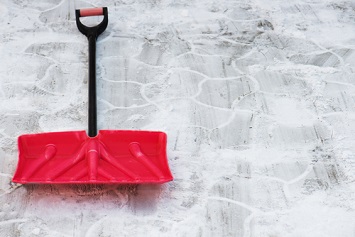It could be a long, cold winter. If your workers have to dig out, can they do it without hurting themselves? Most workers know that shoveling snow and breaking up ice can be exhausting, but they may not be aware of the extent of their risks.
Cold Weather Hazards
Encourage workers to take the hazards of heavy work in cold weather seriously:
- Snow shoveling causes an average of nearly 100 deaths and 11,500 emergency department visits each year in the United States.
- The most frequently injured area of the body is the lower back (34%).
- Heart problems make up 7% of the injuries—but 100% of the deaths.
- The most common cause of injuries was acute musculoskeletal exertion (54%).
- Slips or falls (20%) are the second most common cause of injuries.
Snow Shovel Safety
Shoveling snow is an extremely strenuous activity, especially if there’s a lot of snow or if the snow is wet and heavy.
- Use ice melt, salt, or sand to decrease the hazard of icy surfaces—and the stress of clearing them.
- Snow shoveling may cause a quick increase in heart rate and blood pressure.
- Cold air makes it harder to work and breathe, which adds extra strain on the body.
- Check with your doctor to see if you should be able to do at least moderate shoveling.
- Pick the right shovel for you. A smaller blade will require you to lift less snow, putting less strain on your body.
- Plastic shovels weigh less than metal shovels, and snow is not as likely to stick to them. These factors add less weight to your load. Spray the blade with a lubricant to keep snow from sticking.
- Pick up smaller loads of snow. It’s best to shovel by sections. If you are experiencing snowfall levels of 12-inches or higher, take it easy and shovel 2 inches off at a time.
- Try to clear snow early and often—take frequent breaks. Begin shoveling/blowing when a light covering of snow is on the ground.
- Push snow rather than lift it when possible, especially when the snow is heavy.

